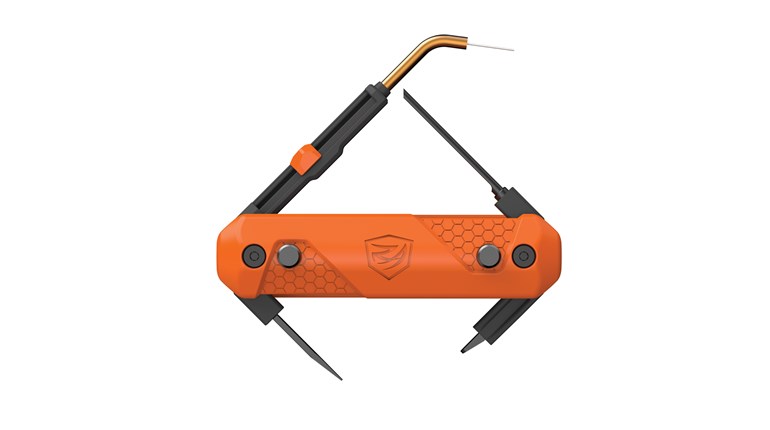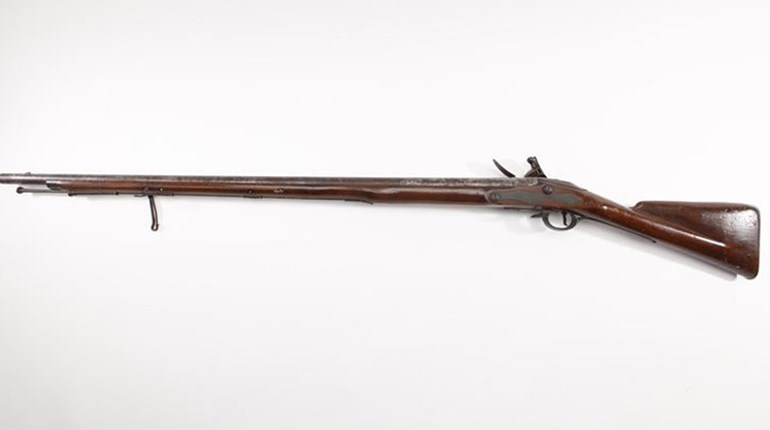
By the nature of the high plains environment I learned to hunt in, I’m the type of guy who prefers the spot-and-stalk method of hunting over sitting and waiting. Forget climbing a tree; there’s a reason our alleged ancestors climbed down and went forth on two feet onto the savannah. So, when I’m hunting, I’m poking along the prairie, peeking into coulees, along draws and over bluffs to find my buck, whether it be a mule deer or pronghorn.
This mobile hunting method requires lightweight gear, from my boots to my pack, and especially my rifle. That’s why I’m looking forward to carrying the Pursuit Ultralight XLT this coming blackpowder deer season. The newest offering from muzzleloader manufacturer Traditions, the Pursuit XLT somehow packs a possibles bag full of features into a lightweight, yet long-barreled, modern in-line muzzleloader.
The XLT tacked onto the end of the name differentiates it from Traditions’ also-new-for-2011 Pursuit Ultralight—and typical of flashy marketing jargon, it could stand for either extra-light or, more accurately, extra-long taper. I’m betting it’s the latter as this front-stuffer features a fluted and tapered chrome-moly barrel that measures 28 inches long, a full 2 inches longer than most in-line muzzleloaders, including its similarly named short-barreled brother. With a 1-in-28-inch twist, the bullet gets a full revolution before it exits the end of the ported barrel.
Those 2 extra inches are more than just a nod to the muzzleloader’s long-rifle ancestry; they provide the XLT with a longer sighting plane when using the Williams fiber optic metal sights. While the test model I shot was fitted with a factory-mounted rangefinding-reticle scope, the additional barrel length did give the gun a weight-forward balance point that made for steadier offhand shots. The longer barrel also correlates to increased velocities.
While the extended barrel does offer these advantages, it’s a mystery to me why Traditions couldn’t match it up with a like-sized ramrod. The aluminum ramrod features an extendable design that reverses to a cleaning jag, but even at full length it requires the hunter to supply a T-handle or other extension to get the additional 2 inches of length needed to run a patch from stem to stern.
The muzzle is drilled with eight ports in a stacked, 360-degree configuration. On the range this reduced the gun’s tendency to kick upward when shooting offhand or from a supported position, and it lessened what would have been an increase in recoil due to the gun’s light overall weight. Personally, I could do without the porting, though the argument of a louder report is lost somewhat with a muzzleloader.
In addition to the longer barrel length, the XLT’s major selling point is its weight, or lack thereof. The gun weighs in at just under 6 pounds plain or a tad over 7 pounds with a scope. Much of this weight reduction comes from the combination of the barrel taper and six shallow flutes that run the length of the barrel from the fore-end to just back of the muzzle brake. All totaled, this slims down the rifle as much as 2 pounds compared to similarly equipped competitors’ models. I found the Pursuit XLT made for a light carrying gun that's ideal for my preferred hunting style, something I’ll really appreciate after a long day of covering miles of broken prairie.
Traditions also chooses to build its barrels from chrome-moly steel rather than the, well, traditional choices of blued or stainless steel. Chrome-moly exhibits a greater strength-to-weight ratio than standard steel, for tighter possible tolerances during the manufacturing process that can potentially equate to greater accuracy on the range. For additional durability and weather-resistance, Traditions adds a CeraKote finish on both the barrel and aluminum-alloy receiver. I’ve had the extremely hard ceramic-based coating added to a number of my project guns and it’s yet to disappoint me in terms of corrosion- and abrasion-resistance.
The Pursuit XLT features a break-open action that’s basically become the standard design for in-line muzzleloaders for its ease of use and cleaning. The action opens via a button on the front of the trigger guard. Far from a beauty mark, the oversized, boxy mechanism detracts from the gun’s lines as if it were a wart on a witch’s nose. I will say it is easy to access, especially when wearing heavy gloves.
Once open, the action reveals Traditions’ Accelerator breech plug, which removes easily without tools using minimal thumb pressure. Just give it three quick turns and its out, ready for easy, push-through barrel cleaning. I particularly like the addition of an O-ring at the base of the plug that you can feel sealing the chamber, thus eliminating any chance of powder and debris blowing back through the breech and into the shooter’s face.
If you take a close look at the firing mechanism during the cocking process, you’ll notice a steel block that drops out of sight as the hammer is locked back. This is an internal hammer block that acts as another safety system, secondary to the common trigger block safety located to the rear of the trigger guard. The hammer block makes it impossible for the hammer to strike the firing pin unless the gun has been fully cocked—a nice safety addition.
On the range, the Pursuit XLT printed groups in the 1.5- to 2-inch range with a variety of loads. The most consistent grouping came from the combination of 100 grains of loose Triple 7 powder capped with a 250-grain Barnes Spit-Fire TMZ saboted copper bullet. It practically takes a hammer to get the Barnes bullets down the bore, however, though they start easily enough thanks to the XLT’s Speed Load System muzzle. Hornady SSTs and Powerbelt AeroLites slid down the barrel with relative ease and printed respectable groups. Deer hunters who find themselves in treestands might opt for the shorter Pursuit Ultralight, but for less than $400, my money goes to the lengthier XLT version. And while the camo model I tested was coated with Mossy Oak Treestand, I think it will be just as at home out here on the prairie, where the light weight and long-distance accuracy will be a welcome addition to my muzzleloading arsenal.
Specs:
Type: break-action, in-line muzzleloader
Caliber: .50
Barrel: 28"; 1:28"
Trigger: 2.5 lbs. pull weight
Sights: Williams metal fiber-optics/3X-9X scope
Safety: hammer block
Stock: Monte Carlo; SoftTouch composite
Overall Length: 44"
Weight: 5.9 lbs. (rifle only)
Metal Finish: Mossy Oak Treestand
MSRP: $389 w/o scope



































